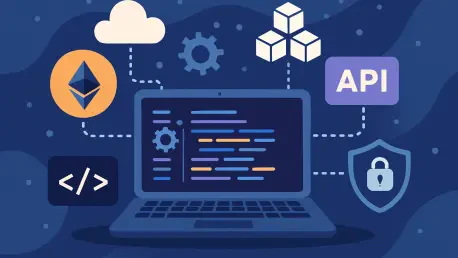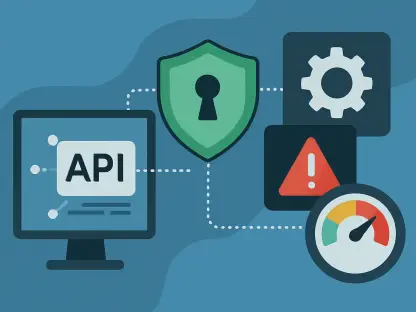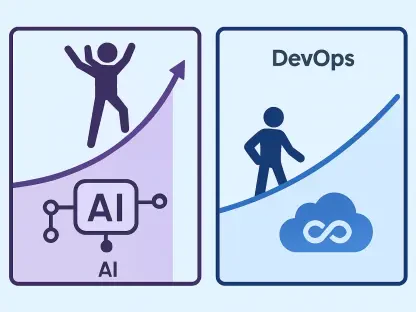Picture a digital landscape where applications no longer rely on centralized servers but instead tap into a vast, decentralized network of trust and transparency. This is the promise of Web 3, and at the heart of this transformation are Web 3 APIs—powerful tools that let developers build cutting-edge apps without wrestling with the raw complexities of blockchain technology. From NFT marketplaces buzzing with activity to decentralized finance platforms managing billions, these APIs are the unseen engines driving innovation.
The significance of this topic cannot be overstated. As the internet shifts toward decentralization, developers face a steep learning curve with blockchain protocols and smart contract intricacies. Web 3 APIs bridge that gap, making it possible to create scalable, secure applications without needing to become a blockchain expert overnight. With the Web 3 market exploding—think trillions in transactions across DeFi and NFTs—these tools are not just helpful; they are indispensable for staying competitive in a rapidly evolving digital ecosystem.
The Critical Role of Web 3 APIs in Modern Development
Diving deeper, the importance of Web 3 APIs lies in their ability to simplify access to decentralized networks. Blockchain technology, while revolutionary, often presents barriers with its technical demands, such as running nodes or decoding on-chain data. APIs abstract these challenges, offering ready-to-use interfaces that let developers focus on crafting user experiences rather than managing infrastructure.
This accessibility is reshaping the industry. For instance, platforms like Alchemy and Moralis provide endpoints that handle cross-chain data queries, enabling apps to operate seamlessly across Ethereum, Polygon, and beyond. Without such tools, the time and cost of building decentralized applications would skyrocket, limiting innovation to only the most resource-heavy teams.
Moreover, the stakes are high in this space. With projections estimating DeFi transactions to grow by 50% annually from 2025 to 2027, developers equipped with the right APIs can capture significant market share. These tools are not mere conveniences; they are the foundation for creating solutions that prioritize user control, security, and transparency in ways traditional web systems cannot match.
Diving into the Core Types of Web 3 APIs
Exploring the landscape, Web 3 APIs come in distinct varieties, each tailored to specific needs within the decentralized realm. The four primary types—REST, SOAP, RPC, and WebSocket—offer unique strengths. REST APIs, known for their simplicity, power many NFT and DeFi platforms through providers like Moralis, delivering fast data retrieval with standard HTTP methods for apps needing efficiency.
In contrast, SOAP APIs cater to enterprise blockchain environments where security is paramount. Platforms such as IBM Blockchain leverage SOAP’s robust standards like WS-Security to ensure compliance in sensitive applications like financial audits or supply chain tracking. Though less common in consumer-facing Web 3 apps, their reliability makes them a go-to for corporate solutions.
Then there are RPC APIs, which facilitate direct communication with blockchain nodes for tasks like smart contract execution. Services like Infura eliminate the need to maintain personal nodes, offering scalable access to chains like Ethereum. Meanwhile, WebSocket APIs shine in real-time scenarios, with tools from NOWNodes enabling instant updates for decentralized exchanges or gaming apps, meeting the demand for low-latency user interactions.
Voices from the Frontlines of Web 3 Innovation
Hearing from those in the trenches brings the impact of these APIs to life. A lead developer at a prominent DeFi startup shared, “Using Infura’s RPC API cut our smart contract response time by nearly 40%, letting us scale without crashing under load.” This firsthand account highlights how performance-driven tools are game-changers for high-stakes projects.
On another front, a tech strategist working with Alchemy’s WebSocket API noted, “Real-time transaction alerts for our decentralized exchange boosted user retention by 25%—users stay engaged when they’re in the loop.” Such insights underscore the tangible benefits of APIs in crafting dynamic, user-centric applications that thrive on immediacy.
Beyond individual stories, industry trends paint a broader picture. A recent survey of Web 3 developers revealed that over 70% rely on REST APIs for their ease of integration, with providers like Moralis often cited for robust analytics. These voices and data points collectively affirm that APIs are not just technical necessities but strategic assets driving measurable success in decentralized development.
Navigating the Maze: Selecting the Perfect Web 3 API
Choosing the right API for a project can feel like navigating a labyrinth, but a clear roadmap helps. Start by pinpointing the application’s core purpose—whether it’s a DeFi dashboard needing REST for data-heavy analytics via Alchemy, or an enterprise solution requiring SOAP’s security through IBM Blockchain. Defining this focus narrows the options significantly.
Next, weigh performance and security demands. High-traffic apps benefit from REST or RPC for speed, as seen with Chainstack’s node access, while interactive platforms lean on WebSocket for real-time updates via NOWNodes. For sensitive data, prioritize SOAP or ensure REST setups use HTTPS and OAuth. Testing free tiers from providers like DropsTab for market insights can also reveal practical fit before full commitment.
Lastly, consider multichain compatibility if the app spans networks like Avalanche or Polygon. Tools from Moralis excel here, supporting diverse ecosystems in one package. By aligning API selection with specific goals—be it speed, security, or scalability—developers can build solutions that not only work but dominate in the competitive Web 3 arena.
Reflecting on a Decentralized Journey
Looking back, the exploration of Web 3 APIs revealed their undeniable power in shaping a new digital frontier. Each type, from REST to WebSocket, played a pivotal role in empowering developers to overcome blockchain’s hurdles, crafting applications that redefined user trust and interaction.
The stories and data shared painted a vivid picture of transformation—whether it was slashing latency for smart contracts or engaging users with real-time updates. For developers standing at the edge of this revolution, the next step was clear: dive into these tools by experimenting with free tiers and sandboxes offered by leading providers. This hands-on approach promised to uncover the perfect API match for any vision.
Beyond individual projects, the broader implication stood out—staying ahead meant embracing cross-chain support and real-time capabilities as Web 3 matured. By leveraging these APIs, builders had the chance to not just participate but lead in a decentralized future, crafting solutions that could reshape how the world connects and transacts.









